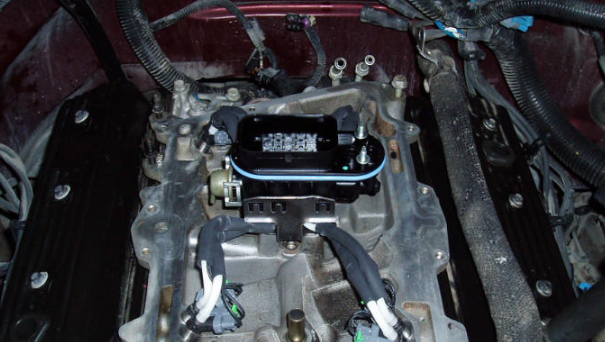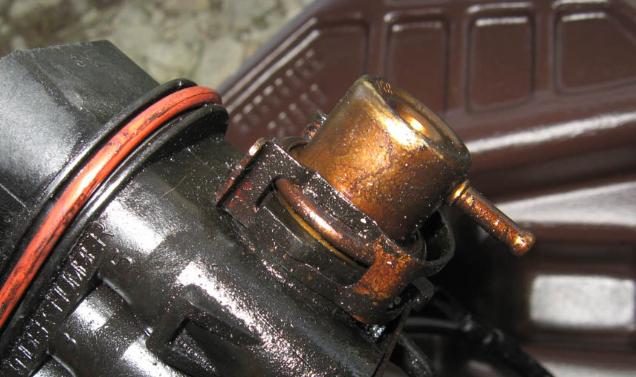When it comes to a 4.3 Vortec, misfiring, low power, black smoke from the exhaust, and a rough idle can all be signs that there is an issue with the fuel pressure regulator. By detecting this problem as soon as possible and taking appropriate measures, one can help ensure their vehicle’s longevity and performance. More information needs to be researched to diagnose and repair the issue in question, so the content of this blog post is crucial in providing such details for those who encounter common 4.3 Vortec fuel pressure regulator symptoms.
Signs Of A Bad 4.3 Vortec Fuel Pressure Regulator
Regarding the 4.3 Vortec fuel pressure regulator, hard starting, rough idle, and suboptimal engine performance are some of the most common indicators that something is incorrect. However, there may be other signs, too; hence why it’s essential to take into account all possible factors when diagnosing the issue.
List Of 4.3 Vortec Fuel Pressure Regulator Symptoms

By understanding the signs of a faulty 4.3 Vortec fuel pressure regulator, one can avoid potential problems and expedite the process of addressing engine issues.
1. Thick Layer On Spark Plugs
When dealing with the 4.3 Vortec fuel pressure regulator problem, the first step is to check the spark plug. Removal and inspection of the spark plug may reveal a thick layer of black soot covering its end, which would indicate that something has gone wrong with the regulator, and replacement of both components is necessary.
2. Dashboard Warning
If the engine light illuminates, it is indicative of an issue with the engine. The internal computer system will detect anomalies and alert accordingly to ensure prompt attention can be paid to rectifying the situation. There are a variety of issues that could cause this light to switch on. Thus, further investigation into other symptoms is recommended in order to gain clarity surrounding the matter at hand.
3. Rough Running
When the engine does not receive the appropriate amount of fuel for combustion, it cannot operate as efficiently as desired. This can result in stalling at start-up and a lack of smoothness while accelerating or decelerating. If there is any hesitation or other irregularities during operation, this could point to an issue with the fuel pressure regulator.
4. Engine Misfiring
Completely failing to start or misfiring are common symptoms of a bad regulator. This is due to the air-to-fuel ratio becoming inappropriate, which prevents the engine from running efficiently. The regulator’s inability to maintain the necessary pressure can lead to several unsuccessful attempts at starting it up again.
5. Poor Acceleration
Those who drive regularly will notice a difference in the way their vehicle accelerates. This could be due to a faulty fuel pressure regulator, which causes weaker and less smooth acceleration than usual. It is important to note that this symptom may also manifest if there is an issue with the fuel injector, such as dirt or another fault.
6. Loud Fuel Pump
The fuel pump is typically known for being relatively silent. However, a defective fuel pressure regulator can sometimes cause it to make more noise than usual.
7. Low Fuel Efficiency
When a regulator is sending more fuel than it should, it is logical that this would lead to decreased fuel efficiency. The increased fuel consumption can cause the engine to work harder to run the vehicle, resulting in significantly less mileage than before. This symptom is quite apparent and can present itself easily in extreme cases.
8. Seeing Black Smoke
When black smoke begins to come out of the exhaust, it could be a sign of a bad regulator. This issue can occur due to either an internal malfunction or potentially because of a leak in the regulator itself. It is essential not to delay addressing this problem – take action promptly upon recognizing it.
9. Dripping Fuel Out Of Tailpipe
Owners have reported that fuel dripping out of the tailpipe can be a sign of a faulty fuel pressure regulator.
Pro Tip: When it comes to checking for gas in the line and ensuring that the regulator is bad, pulling the fuse of the fuel pump, starting it, and letting it run out of gas are entirely viable solutions when one does not possess any tools required to release pressure. After executing this procedure, changing the regulator should be an easy process.
What To Do When You Detect A Bad 4.3 Vortec Fuel Pressure Regulator?
Detection of a faulty regulator is the first step in replacing it. There is no alternative to replacement when the part cannot be repaired or salvaged. With some effort and guidance, one can replace the component without assistance from an expert mechanic.
Describing the steps in the simplest way possible is offered as assistance.
- To begin, the initial action is to loosen the filler cap in order to depressurize the fuel system.
- Following that, an inspection of the area beneath the hood will reveal the location of the fuel pump relay, which should then be extracted from its position on the fuse panel.
Tip: Consulting the car’s owner’s manual can be of great assistance in locating an item. Additionally, prior to beginning the search, it is essential that the engine be depressurized by allowing it to idle for some time.
- When the engine ceases to function, it is an indication that the fuel pressure within the system has depleted. Switch off the ignition and disconnect the wiring from the battery’s negative terminal.
- Immediately detach the vacuum line attached to one side of the pressure regulator after that step.
- Securely fix the fuel pressure regulator by using a pair of screwdrivers for retention clip purposes.
- After taking out the regulator, the O-ring and filter screen must be removed from its location.
- To finish up, install the new part by lightly coating the O-ring with clean engine oil beforehand.
After all the steps have been successfully completed, reconnecting the battery terminal is a must. Priming the fuel system should be done next, which can be achieved by switching on the ignition for 3 to 5 seconds. Doing so will ensure that the vehicle is ready to start up and operate as expected.
Is Replacing A Bad 4.3 Vortec Fuel Pressure Regulator Expensive?
Considering the labor cost, a new regulator can be purchased for around 300 dollars. Researching and taking advantage of any online deals that may be available when purchasing this part is beneficial to spend as little money as possible. Although the labor cost varies from state to state, it should not exceed 500 dollars in total when fixing the problem.
How Often Should You Service 4.3 Vortec Fuel Pressure Regulator?
Owners and car mechanics suggest that the best practice is to check the regulator during scheduled maintenance. New owners are also recommended to replace the fuel filter every two years or 3000 miles to maintain a healthy regulator.
Additionally, it is advised that good quality fuel from reputed gas stations should be used to ensure parts are functioning correctly over time.
Final Thoughts
If the system is interconnected, any disruption caused by a bad regulator can have an adverse effect on its functioning. Therefore, it is essential to pay attention to the 4.3 Vortec fuel pressure regulator symptoms and take necessary action when they arise in order to avoid further issues with the entire system.
